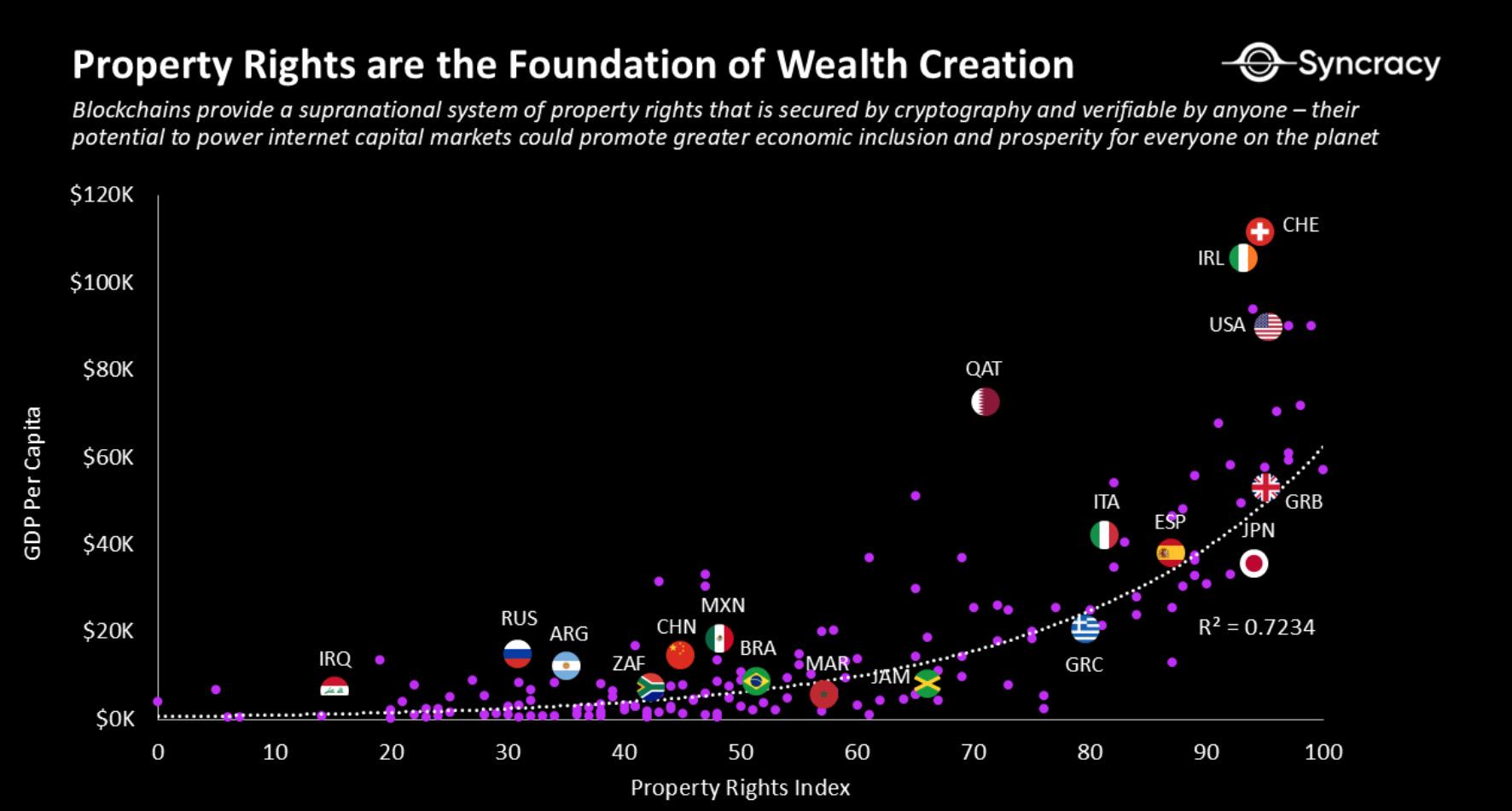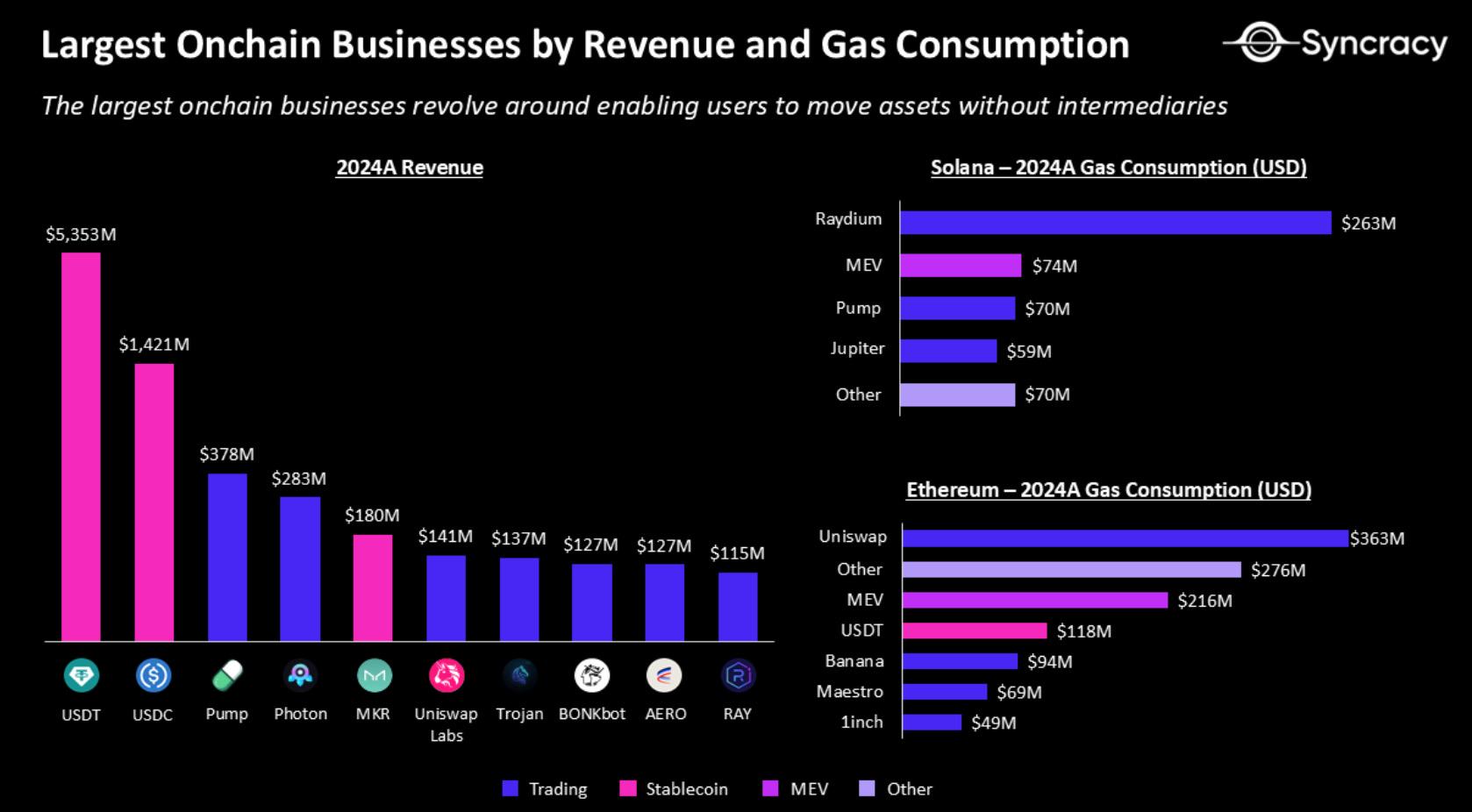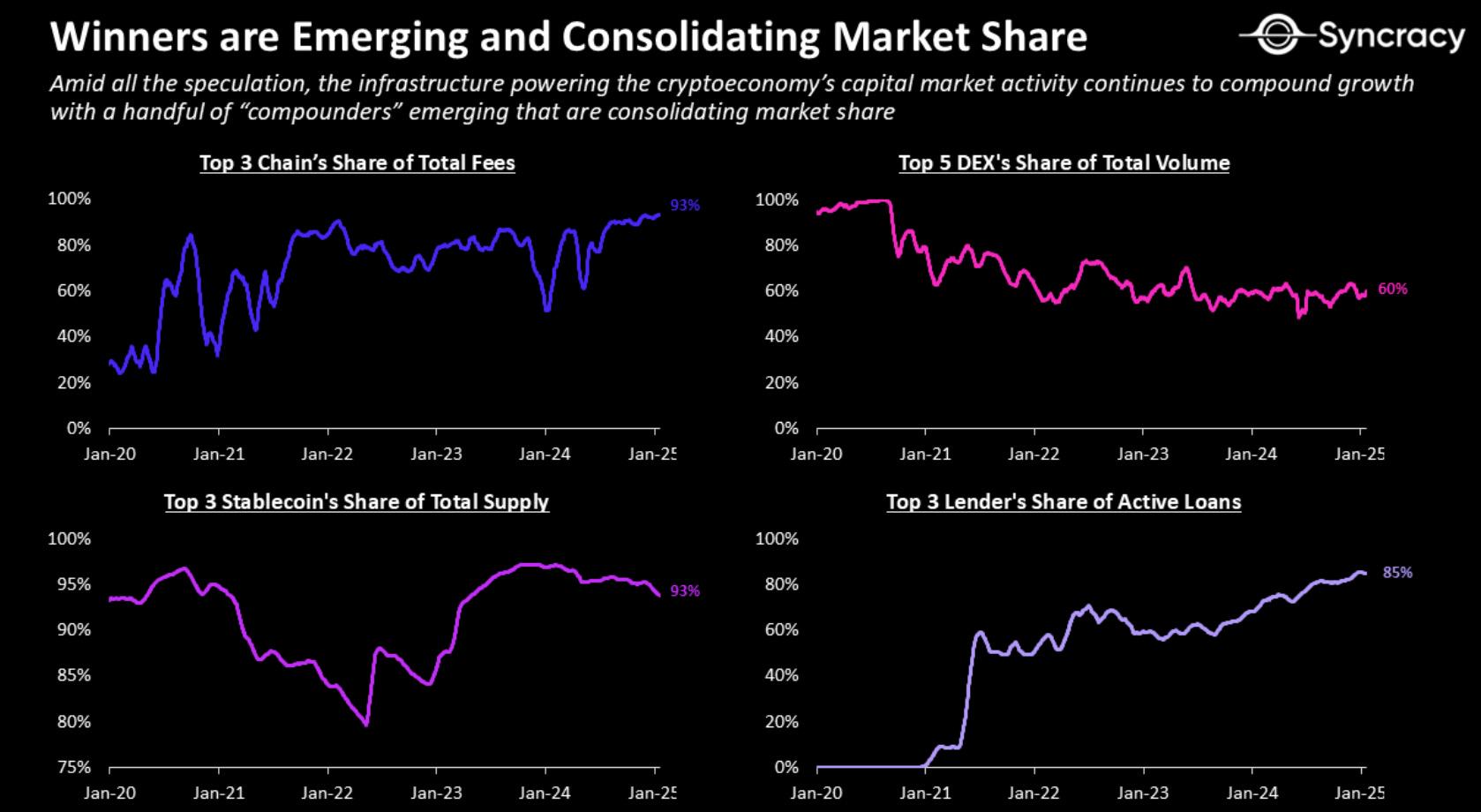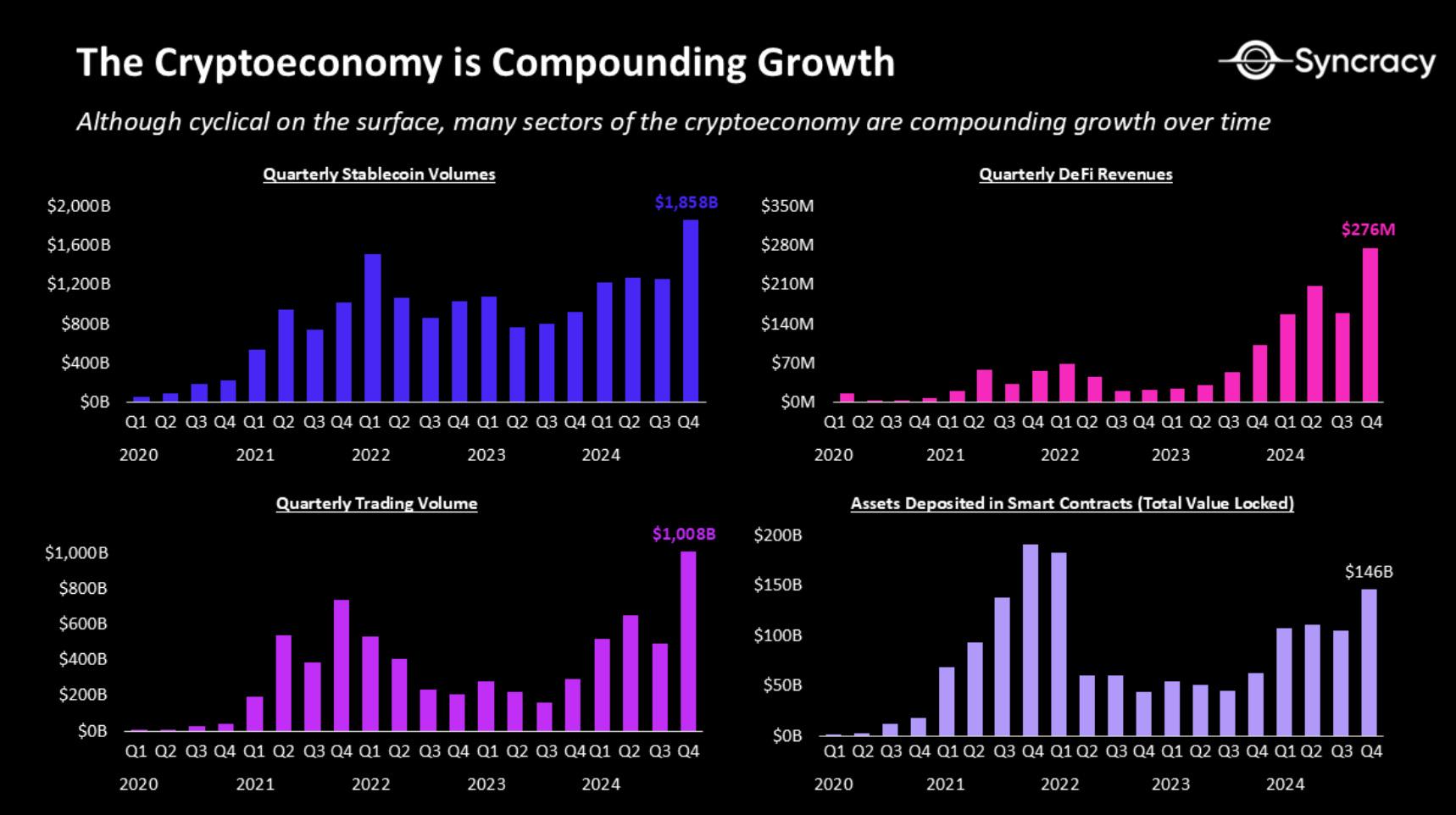Author: Techub Selected Translation
Written by: Ryan Watkins, Co-founder of Syncracy Capital and former analyst at Messari
Translated by: Yangz, Techub News
Critics often cite the pervasive financial nihilism in the crypto economy as evidence that this economic system will ultimately collapse under the weight of its excesses. However, beneath the speculative activities that fuel this skepticism, we also see some emerging "winners" that are steadily growing over time. In this article, we will explore the contradiction between the "uselessness" and "utility" of the crypto economy and clarify that they are actually two sides of the same coin.
"It was the best of times, it was the worst of times; it was the age of wisdom, it was the age of foolishness; it was the epoch of belief, it was the epoch of incredulity; it was the season of Light, it was the season of Darkness; it was the spring of hope, it was the winter of despair; we had everything before us, we were all going direct to Heaven, we were all going direct the other way." — A Tale of Two Cities, Charles Dickens
Critics often use the widespread financial nihilism in the crypto economy as evidence of its futility. Despite Bitcoin being launched 16 years ago and Ethereum 9 years ago, there are still few mainstream use cases that can demonstrate their undeniable utility.
Whenever we hear stories of users in emerging markets protecting their savings from domestic inflation through stablecoins, there always seem to be more users in developed markets gambling their savings on various Memecoins.
Stablecoins are both liberation and destruction; blockchain is a great equalizer and a giant disruptor; the crypto economy is the future of the global financial system and the largest collective illusion in human history.
These opposing views reveal a high level of risk, as this technology has the potential to change the world but may also self-destruct due to its excessive radicalism. For many, this contradiction breeds skepticism, prompting the question, "What does it all mean?" It also raises doubts about whether it makes sense to hold long-term fundamental views on assets in the crypto economy, aside from Bitcoin.
However, this contradiction between "uselessness" and "utility" is not a flaw but a feature, showcasing the growing pains that the revolutionary potential of blockchain is experiencing.
Wealth Democratization in the Digital Age
In a world where inequality between nations is increasingly pronounced, blockchain technology has the potential to democratize wealth for billions. To understand this, one must first grasp the concept that "blockchain is a new type of institution," enabling users to transact and execute contractual relationships without intermediaries. Blockchain achieves this through a supranational property rights system secured by cryptographic technology, allowing anyone to verify transactions. It is a subtle yet powerful tool for creating a fair economic competitive environment.
Blockchain relies on cloud operations, with its only physical presence being thousands of computers distributed around the world, whose integrity is maintained collectively. These computers create an internet-native infrastructure for the market, which is the best mechanism to date for achieving the "perfect information" necessary for effective resource allocation [https://en.wikipedia.org/wiki/TheUseofKnowledgein_Society].

Property Rights Index; Data Source: The Global Economy, International Monetary Fund
Ronald Coase's groundbreaking paper "The Nature of the Firm," published in 1937, best illustrates the significance of this change. Coase argued that firms exist because the costs of searching for information, negotiating agreements, and enforcing contracts in the market exceed the efficiency of outsourcing.
Blockchain fundamentally alters this situation. By enabling automated execution through cryptographic technology, blockchain makes information universally accessible and reduces reliance on intermediaries, significantly lowering transaction costs, especially when combined with internet-era auxiliary technologies like search engines and gig economy platforms. As transaction costs decrease, the demand for large hierarchical companies diminishes, paving the way for a blockchain-based global market structure. This structure can maximize economic production, enhance market efficiency, and lay the foundation for entirely new markets.

The largest on-chain "businesses" by revenue and gas consumption in 2024; Data Source: DeFiLlama, Artemis, Top Ledger
The crypto economy has already demonstrated these advantages. Stablecoins have facilitated economic growth and financial inclusion by providing global users with cheap, reliable currency; global exchanges and lending platforms have created more efficient markets and achieved democratization of capital market access; DePIN has created entirely new markets, allowing users to coordinate and monetize different physical and digital resources. All these use cases operate with high efficiency and possess software-like profit margins, while blockchain automatically handles most backend infrastructure and settlement activities. Large financial institutions and corporations are slowly recognizing this potential, with many either launching products directly on the blockchain or integrating blockchain-based projects into the backend infrastructure of existing products [https://planner.hellohelium.com/stats].
So why are there still skeptics regarding the crypto economy?
The Overlap of Utility and Uselessness
Creating decentralized infrastructure for trading and executing contracts inevitably leads to unrestricted experimentation. Given that the potential user base of blockchain encompasses billions of internet users worldwide, the momentum for such experimentation is exceptionally strong. Even leaders from various countries are issuing their own currencies. The allure of opportunity drives the rapid proliferation of new assets and financial protocols, which include both transformative innovations and outright scams.
While these attempts may seem reckless, they are not much different from the dot-com bubble. At that time, many companies went public with little more than a domain name. In contrast, the crypto economy has amplified this dynamic to the extreme, providing anyone with access to capital markets on an internet scale. This has created an unprecedented stage for innovation and speculation, ultimately accelerating the pace of discovery and adoption. After all, before trillions of dollars in future value enter the blockchain space, speculation will attract new users and provide the system with much-needed stress testing.

"Winners" are emerging and consolidating market share; Data Source: DeFiLlama, Artemis, Token Terminal
However, among all the speculative activities, a few "winners" have begun to stand out. Many projects are driving speculative activities in capital markets, occupying top headlines while achieving compound growth behind the scenes. These "winners" are rare "compounders" that are consolidating market share, expanding their capabilities, and increasingly serving non-speculative use cases over time. These projects will ultimately provide the pillars for the crypto economy to mature and scale globally.
Will Parallel Paths Converge?
In the foreseeable future, Syncracy believes that the best way to articulate the fundamental arguments of the crypto economy is to find assets that are both robust and capable of capturing the inherent speculative momentum of internet capital markets. This is not a profound statement, as in practice, it simply means embracing those rapidly growing projects that people are actually using. For now, this also means going long on trading volume, such as monetizing on-chain speculative activities directly through asset issuers or market platforms (like exchanges), or investing in their underlying infrastructure, such as L1s. These L1s not only monetize speculative activities but also provide flexible valuation frameworks, as they are often priced as currency-like assets.
In fact, going long on speculative activities through infrastructure (rapidly growing projects that people actually use) has been a commonality among many of the biggest winners in this cycle. Solana offers top-tier performance, making the on-chain trading experience similar to traditional retail trading platforms (like Robinhood); Phantom creates an Apple-like user-friendly experience, with a particular focus on mobile applications, allowing users to speculate anytime and anywhere in unprecedented ways; Pump.fun compresses the costs, energy, and resources required to launch new tokens; Hyperliquid gives on-chain traders a centralized exchange feel, but at a lower cost with fewer barriers and restrictions; Virtuals and ai16z (Eliza) allow anyone to launch AI agents with associated tokens and wallets; Telegram bots and token discovery tools (like Photon and DexScreener) bring a glimmer of hope to the on-chain economy, making it easily accessible from familiar applications. The examples are countless.

The crypto economy is experiencing compound growth; Data Source: DeFiLlama, Artemis
Ultimately, we will move beyond this model of attracting super high attention and traffic through speculative projects, especially as more institutional investors enter this asset class. Meanwhile, there are many projects in DeFi and DePIN that are not highly speculative but have promising prospects, steadily rising along the “Slope of Enlightenment” (i.e., the fourth stage of the Gartner Technology Maturity Curve: where the advantages of technology begin to become apparent and are more widely understood). These projects are showing early signs of product-market fit and fundamental improvement. While these assets may take time to realize valuation growth, they also urgently need a clear regulatory framework to push them into the mainstream. Although some sectors (like stablecoins) have pointed the way forward for the industry and confidently entered the deployment phase of their lifecycle, given the current complexity of crypto economic activities, observers can still find many counterexamples to interpret according to their biases.
Nevertheless, from an investment perspective, our current goal is to cultivate long-term participants and make good use of the duality of the crypto economy, increasingly serving actual, non-speculative use cases while leveraging speculative energy to drive financial transformation. Such assets can achieve compound returns over time, rather than getting caught in the "rotation game" whirlpool like many other narrative-driven assets in the crypto economy. These assets will ultimately lead the world toward on-chain transitions, as the speculative activities they drive will attract new users and provide much-needed stress testing before trillions of dollars in value enter the blockchain space in the coming years.
In fact, uselessness and utility are, like the two sides of a coin.
免责声明:本文章仅代表作者个人观点,不代表本平台的立场和观点。本文章仅供信息分享,不构成对任何人的任何投资建议。用户与作者之间的任何争议,与本平台无关。如网页中刊载的文章或图片涉及侵权,请提供相关的权利证明和身份证明发送邮件到support@aicoin.com,本平台相关工作人员将会进行核查。




